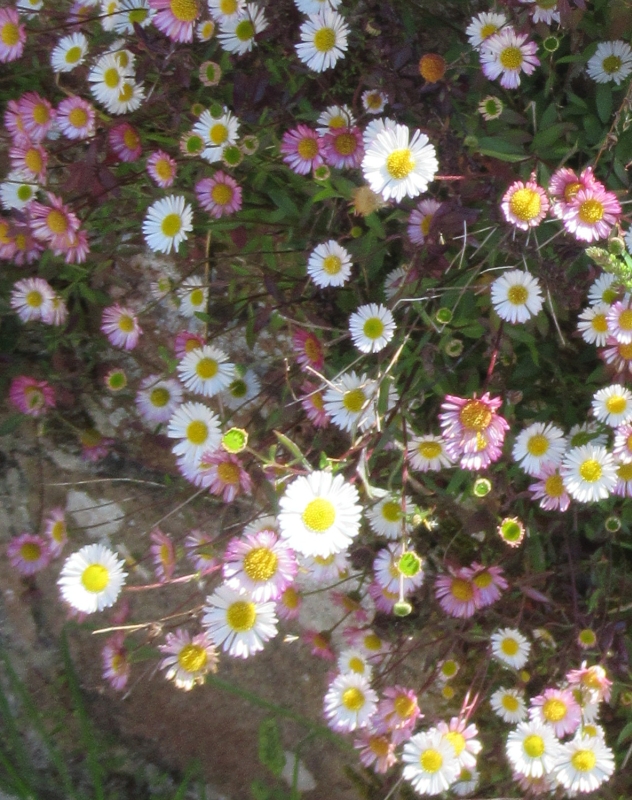Some interesting comments on new names for plants in Jèrriais, edited from "A Natural History of Jersey" (Le Sueur, 1976):
The argument is often put forward that if a species has a [Jèrriais] name then it must be an old-established resident of the Island with its roots metaphorically away back in time. I have never been able to agree with this as it involves the tacit assumption that [Jèrriais] has always been a dying, or at least a static, language. Until this century that was not true and as the Island's flora changed, so would the [Jèrriais] languagage to absorb the new species. There were three possible courses: a new name could be invented, some foreign name could be literally translated into [Jèrriais], or if the new species was vaguely like one already here, the name of this could be used to cover both. If the words chosen were 'good' [Jèrriais] then the history of the plant would be obscured. For instance, the actual words of mèrgot ès pouochîns et êtchelles dé Jâcob cannot be faulted philologically, yet we know from the history of these species outside the Island that they cannot have been here long. Mèrgot ès pouochîns, the small pinky-white daisy-like flower which grows in such profusion on granite walls that it looks like a native species, comes from Mexico, as its English name Mexican fleabane implies, and was probably introduced into Jersey late in the 19th century. But êtchelles dé Jâcob when applied to the now common montbretia Crocosmis x crocosmiflora is an even better example. Its flower was seen in 1880 for the first time by anyone anywhere only after a Frenchman, Victor Lemoine, had 'made' the species by crossing its two South African parents in his garden at Nancy. In view of this a [Jèrriais] name cannot be held to imply long residence here.
 |
| mèrgot ès pouochîns |

No comments:
Post a Comment